

DIY Cruising Catamaran: Complete Building Guide
As an Amazon Associate, we earn from qualifying purchases. We may also earn commissions if you purchase products from other retailers after clicking on a link from our site.
A brand-new cruising catamaran can set you back a hefty amount of money. However, a DIY cruising catamaran provides a more affordable way to own your own boat. While building a large boat can be an extremely challenging and time-consuming experience, nothing beats the pleasure of bringing your own boat to life.
To build a DIY cruising catamaran, buy good design plans, determine your budget and find a working space. Next, choose your hull material, buy supplies and start building the mast beam. Build and sheathe the hull, install bulkheads, the interior, and finally, launch the catamaran boat.
In this article, you will find a complete guide to building your own catamaran. You will also find detailed information on why you may want to consider building your catamaran and approximately how much this project would cost. Finally, we will explore the advantages and disadvantages of building a catamaran from scratch.
Why You Might Want To Build Your Own Catamaran
Most people might think that purchasing a used boat to repair and fix it up would be cheaper than a DIY cruising catamaran. But while building your own catamaran could be an enormous undertaking, it also comes with many advantages over buying something used.
Other than the unique opportunity to create beautiful memories and experiences while cruising, sailing, and exploring beautiful coastlines, there are a number of benefits that come along with the DIY approach.
Knowing Your Boat
Building your own catamaran provides you with intimate knowledge of your boat. You will know every corner, including where to find every bolt, wire, bulkhead, rib, hose, and support as you installed them yourself. This knowledge will enhance your confidence while at sea since you will have entrusted your life to a boat whose history you are aware of and deeply connected to.
Pride of Ownership
The satisfaction you get from crafting something with your own hands is immense. As a result, the knowledge that you built your boat from scratch will fill you with absolute pride and an immense sense of achievement. Furthermore, as an owner-builder, you get to keep and enjoy the boat for as many years as you wish.
Substantial Cost Savings
Building your catamaran will work out cheaper than buying a new or even gently used boat. Though you will likely require some additional labor since doing some things will require an extra pair of hands, if you are particularly good at DIY, you will save a significant amount of money on labor costs as a whole.
Freedom To Create Your Own Designs
If you decide to buy a catamaran boat, it might not be easy to find one that meets your unique needs. However, instead of choosing from production boats that bear traditional and outdated designs, you can come up with an ultra-modern design or style for your catamaran. You also get to pick your layout, size, and equipment based on your taste and budget.
Great Learning Experience
Building your own boat will help you pick up numerous skills that will come in handy later when sailing your boat. As much as you might still require an expert to help you with specialized skills like carpentry or wiring, your new skills will serve you well. This will also be beneficial when it comes to your boat’s maintenance and fixing things for yourself.
What To Look For in Catamaran Boat Designs
When deciding on the type of catamaran boat to build, you may want to choose a design that’s simple and easy to build. This is because doing so will allow you to spend a shorter time building the boat.
You also need to have a set of requirements to guide you in choosing your design or what you might call an ideal cruising catamaran wish list. This is essential because, ultimately, you want to build a boat that offers outstanding qualities such as:
- Delivers good speed
- Affordable to own and operate
- Agile, strong, and easy to maintain
- Has a high resistance to capsizing
- Great for sailing and cruising
- Delivers a comfortable and easy motion underway
- Good handling ability and high performance under sail
- User-friendly embarking and disembarking
- Provides ample living and accommodation space
- Presents a reasonable resale value
It’s worth noting that, in general, catamaran boats tend to offer a fair resale value mainly because of scarcity and the high price accorded to production models. So, if you build a well-constructed catamaran, you are bound to get a return that’s much higher than the cost of materials upon resale.
It’s also good to consider whether the design you settle on is from an established designer. This is significant because documentation of the building process is just as valuable when it comes to selling the boat.
How Much Would It Cost To Build Your Own Catamaran?
The cost of building your cruising catamaran will depend heavily on the size of the boat you plan to build and the skills you bring to the table. To give you an idea of probable costs, a professionally built 40 foot (12.1 m) long cruising catamaran could go for up to $300,000.
Though building it yourself will undoubtedly be cheaper, most DIY boatbuilders tend to underestimate the expected costs. Your final costs should cover not only the cost of material and equipment but also the labor and time it would take to come up with the final product.
If you were to build a 40-foot (12.1-meter) catamaran, your cost of materials would range between 20-30% of the total cost. Therefore, for $300,000 total, the boat’s materials would range between $60,000 and $90,000. The hull tends to range between 15-35% of the total build. Again, this depends on the finish and furniture.
But before you even start working on the DIY project, you will need to figure out where to do the work. If your home has ample space, then you can opt for a backyard building. But if you live in a small apartment, then you might want to consider renting a small garage at first and then move on to a boatyard later. This is one of the significant costs involved in building your multi-haul.
What You Will Need
To get a clearer picture of how much the entire project would cost, let’s have a look at what else you will need to purchase.
- Good design plans
- Working space
- Ground tackle
- Matting and roving
- Equipment such as the engine, windows, rudders, deck fittings, mast, and rigging
In addition to the above, you also need to install plumbing and electricals. You may also want to consider going electric rather than using diesel. Not only will this drastically reduce your maintenance costs, but you get to use the regenerated power for all of your housing needs while sailing.
Some catamaran boat designs help you save costs by advocating the use of less expensive corpus materials. Most of the material goes directly into making the boat, which means there is hardly any wastage on vacuum bagging . With this method, there are few molds and temporal building forms and fewer fillers to grind off as waste. All these factors reduce the time and cost it takes to build your catamaran boat.
That said, building a boat of any kind is a huge financial undertaking. As such, you still need to have the financial ability to keep building; otherwise, your project will stall or take much longer than anticipated. Instead of enjoying yourself and making memories cruising to faraway lands, you might end up spending all your time building a seemingly never-ending boat.
To reiterate, this project is more of a labor of love, given that it involves a tremendous amount of manual work. Calculating an hourly rate on the time spent building the boat and adding this cost to that of materials may make it seem a very pricey exercise. However, it is vital to understand that your time matters, and every hour you spend working for “free” should be included.
With that in mind, you need to ensure that you are fully devoted to the boat construction project and are sure you want to do it before you begin. Stopping halfway because it seems like too much work would be incredibly costly.
How To Build a Catamaran
When it comes to building a cruising catamaran, you have 3 main options:
- You can buy an old boat and refurbish it.
- Purchase a bare hull plus deck molding for a home-boat building.
- Start from scratch and build everything, including the hull, on your own.
As mentioned above, renovating an existing boat may end up being more costly than starting from scratch. To build a catamaran boat from scratch, follow the below step-by-step guide.
Prepare the Essentials
Before you jump into such a large project, there are several important aspects to consider:
- Buy your plans from an established catamaran designer. You can also get inexpensive, easy-to-build catamaran designs online.
- Get access to a large working space or build a shed . Depending on your climate, you may need to opt for climate control to avoid an excess of moisture in humid areas.
- Decide on your choice of hull material. This could be fiberglass, aluminum, steel, wood, or ferroconcrete.
- Start working on a bill of materials estimate. Include everything that you think you need to get a better idea of the initial costs.
Build the Mast Beam
Using wood and epoxy, cut and glue together the pieces of wood that will form the mast beam. Most of the work at this stage can occur in a garage since it involves building small parts. Still, the work could take up to 4 months, so be prepared to put in long hours.
Build the Boat Hull
Now, it’s time to build the boat’s hull. A catamaran comprises two hulls which are connected with a deck. Below is a short video showing how to build a hull mold:
This work requires a larger facility, so you might need to move out of the garage and into a boatyard. If you don’t have access to a larger workshop, consider building a shed where you can work as you do the construction. Make sure there’s enough room to fit the boat and also allow you to work comfortably. To cover the shed, you can use opaque white tarps.
Sheathe the Hull
Get all the materials you require for this stage in the construction, such as lots of resin, fiberglass, and foam for use in the hull cores. You’ll also require matting and glass roving to sheath the hull .
Sheathing helps to make the hull impervious to water and other marine borers. But first, you need to prepare the hull using a rotary sander. To make it as smooth as possible, use light, sweeping strokes. This is a very dusty task so be prepared to wear a facemask and safety goggles.
Install the Bulkheads
Next is installing the plywood bulkheads . You might need to call in friends to help turn the hulls or use a crane. In this step, you will need to laminate the hull sides on the molded hull panels and bond them above the bulkheads. Ensure the bulkheads are snug and sealed in place.
Construct the Interior Structure
Over the next couple of months, the boat work will involve joining the hulls together with the beams that you had made back in the garage. Then, install the cuddy cabin, decks , and the cockpit . Soon the boat will start to take the shape of a catamaran.
Next, proceed to construct the major structural components such as stairs, hatches, mini-keels, and the interior. Then comes the work of fairing the boat, which is quite labor-intensive.
Finally, it’s time to apply primer on the catamaran boat and start the paintwork. Before painting the boat, you will need to do additional sanding to finish off the two layers of primer as well as fill all the pinholes. Since it’s a large boat, the catamaran has lots of surface area; thus, the sanding could get extremely exhausting—mentally and physically—at this point.
The painting can take a while, too. The hulls are the easiest to paint, but the topsides, non-skid, as well as masking and prepping could seem never-ending.
The final stretch involves working on the center bridge deck cabin and other final touches like installing the engines, electricals, and plumbing. This is also the time to fix the rudders, rigging, mast, windows, and deck fittings.
Launch Your Cruising Catamaran
After many months or years of hard work, your cruising catamaran is finally ready to test the waters. After lowering the boat into the water, check carefully in case there are leaks. If none, you can set up the sails and take your catamaran out for your first cruise.
Below is a short video that takes you through the entire boat-building process:
If you don’t have deep pockets, don’t despair. It’s also possible to build an inexpensive catamaran boat, as shown in this post from the coastal passage .
The Pros of Building a Catamaran
Though it will be a costly endeavor, there are so many things to look forward to should you decide to build your own catamaran:
- It can be lots of fun.
- You get to have a new boat.
- It’s an excellent hobby for DIY enthusiasts.
- The effort is rewarding.
- It offers a great learning experience.
- You get the exact kind of boat you want.
- You can alter building plans and tailor the boat to suit your specific needs.
- It might be cheaper than buying a new boat.
The Cons of Building a Catamaran
Though there are a number of positive aspects to a DIY build, it is just as important to keep in mind that it won’t always be easy:
- Maintenance costs can be quite high.
- It’s both mentally and physically exhausting.
- It might require some technical know-how.
- It can take many months or even years to complete.
- It requires a lot of commitment to finish the DIY project.
- It might be challenging as well as expensive to get insurance.
- You will spend almost all your free time building the boat.
DIY Cruising Catamaran Tips and Tricks
If you are new to boat building, it would be a good idea to build a small boat first. This would give you a good indication as to whether you’d enjoy tackling a more extensive project like building a catamaran. Again, if you are the handy type, fixing your own electronics could also save you a significant amount of money.
Here are more tips and tricks to get the most out of your DIY cruising catamaran:
- Lower your costs. Bring down your costs even further by sourcing for parts and supplies at marine surplus outlets, Craigslist, eBay, or wholesale suppliers.
- Enhance your resale value. Most home-built boats are not easy to sell since they tend to be too customized. To enhance your resale value, it’s advisable to work with a standard design from a well-established naval architect.
- Follow the design instructions. Make sure to follow the designer’s instructions regarding the type of materials and tools to use during the build to avoid making costly mistakes.
- Maintain your original budget. Avoid any additional customizations once you have started building the boat. Using good plans and sticking to them ensures that your budget doesn’t spiral out of control.
Final Thoughts
Building a catamaran is about more than saving money. It’s fun, exciting, fulfilling, and can be a great learning experience. While it might take many months of back-breaking work, comparative shopping and sourcing for materials will help you save a lot of money. Still, at the end of it all, you’ll have a beautiful catamaran boat, all ready for your first cruising adventure.
However, if you have neither the time nor the energy to build your own catamaran from scratch, refurbishing an existing hull might prove faster and easier. It also works out much cheaper than buying a new boat.
Owner of CatamaranFreedom.com. A minimalist that has lived in a caravan in Sweden, 35ft Monohull in the Bahamas, and right now in his self-built Van. He just started the next adventure, to circumnavigate the world on a Catamaran!
One thought on “ DIY Cruising Catamaran: Complete Building Guide ”
Hello, I am a French Quebecer who is original, imaginative, creative and who finds that all boats and catamarans have a huge flaw and a very big lack of logic. I would have a brand new concept…. I am sending this message to any catamaran creator – designer to make those who have the opportunity and the intelligence to want to know about my innovative idea which will finally upset the market much richer. An idea that will totally change the concept of sailing, navigation and save so much worry!! All I would ask for is a small percentage of each sale of the new product. To be able to make me produce one when I have enough!! It is certain that like that, you just want to tell me: come on Mr. Lessard give us your idea but do not take your word to help me in return! But, if you are the kind of man to have only one word and maybe have a proof of your good faith if the realization of the project would make it… I will be very happy!! Giving it to everyone wouldn’t bother me either…. all I would like is to be able to find flax fiber (too expensive carbon) to be able to try to make my catamaran myself. Because not rich! Have a nice day and looking forward to having a message!!
Leave a Reply Cancel reply
Your email address will not be published. Required fields are marked *
Save my name and email in this browser for the next time I comment.
Recent Posts
Must-Have Boat Gear for Catamaran Sailors!
Sailing is probably the most gear-intensive activity I've ever done; there are so many decisions to be made about what gear to buy now, for tomorrow, and what to definitely never buy. The gear on...
6 Best Trailerable Trimarans For Bluewater and Coastal Sailing
Having a boat costs a lot of money, even when you are not using it, marina fees, etc. And once it is in the water most sailors never go very far from their "home marina" and sailing will be somewhat...

- No products in the cart.
Catamarans and Trimarans
Catamaran and Trimaran Boat Plans make it a reality to build your own catamaran or trimaran. Multi-hulled sailing vessels are a special class of boat. A very different mind set is required when thinking about sailing a multi hull, let alone getting your head around building one.
There are some unique challenges building a multi-hull sail boat, the extra beam added by each hull for instance can create storage issues while under construction. Hartley boat plans make the build process straight forward for even amateur builders. However with all things considered, building a multi can be an amazing journey.
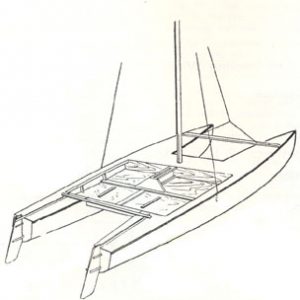
Fast Twin Catermaran
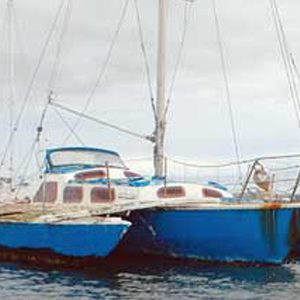
Lively 28 Cruising Trimaran
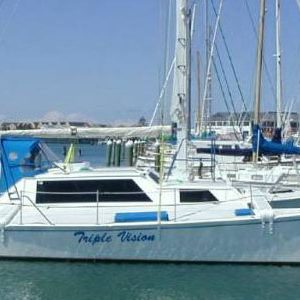
Lively 35 Cruising Trimaran
[email protected]

The Best Advanced Build System in the World
The schionning advanced build system are one of the simplest ways to build your own boat, or have a custom design built faster and more accurately by a professional. utilising duflex panels with a balsa core, large sheets are joined on their long edge to form full length hull panels, bulkheads etc similar to a giant jigsaw puzzle. once you release the tabs, your full size pieces are ready to be assembled., a pre-cut advanced build system does not only benefit the home builder, but streamlines a professional build as quantities are accurate and wastage is minimised. when having a vessel built overseas, a kit reduces the chances of local materials not being available, or delays during your project, and ensures there are no mistakes., read on below to gain a more solid understand of how the schionning advanced build system go together, where are you building.
Schionning Designs is partnered with a number of leading composite manufacturing companies with varying CNC capabilities, as well as supplying resins, hardeners, cloths and fillers. Our partners are located in different parts of the world, so where you are planning to build your boat will have an impact on which composite company is best to supply your kit.
Listed below are our composite manufacturering partners, ATL Composites located in Australia, VDL Composites located in Germany, and PBT Technologies located in South Africa.

ATL Composites (Australia)

VDL Composites (Germany)

PBT Composites (South Africa)
Starting the process.
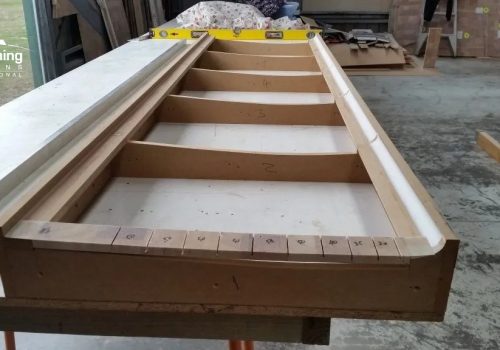
THE KIT PROCESS
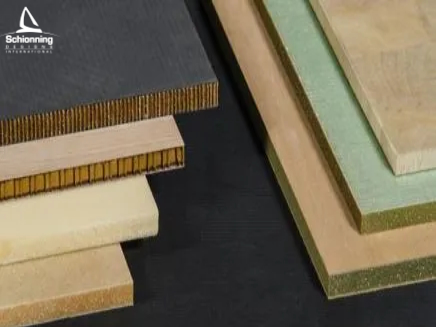
MATERIAL CHOICES

TECHNICAL INFORMATION

RECOMMENDED EQUIPMENT

How To Build A Catamaran? (A Step-By-Step Guide)

Are you excited about the prospect of building your own catamaran? With a little research, planning, and the right tools, you can turn your vision into reality in no time.
In this step-by-step guide, well show you how to make the most of this incredible boatbuilding project.
From selecting the materials and planning the design to constructing the hulls and deck and outfitting the boat, well walk you through everything you need to know to build a catamaran of your own.
So, grab your tools and lets get started!
Table of Contents
Short Answer
Building a catamaran requires careful planning and a lot of patience.
The first step is to decide on the design and the materials you will use.
You will need plans for the project, along with lumber and other materials such as fiberglass and epoxy.
The next step is to build the catamaran frame, which involves cutting and fitting the wood pieces together to form the hulls and decks.
Finally, you will need to attach the decking, add the rig and sails, and finish the project with paint and varnish.
Benefits of Building a Catamaran
Building a catamaran can be a very rewarding experience.
Not only will you have the satisfaction of creating something with your own hands, but you will also have a boat that is uniquely yours.
Catamarans offer many benefits over traditional monohull boats, making them an ideal choice for those looking for a reliable and efficient ride.
These benefits include greater stability, more space, improved fuel efficiency, and greater speed.
Stability is one of the biggest advantages of catamarans.
The two hulls provide a wider base that helps to keep the boat from rocking and rolling in rough waters.
This makes for a much smoother and safer ride, even in choppy waters.
Additionally, the two hulls create an open area between them that is perfect for storing equipment, making it ideal for longer trips.
Catamarans are also more fuel efficient than monohulls.
This is because the two hulls provide lift, allowing the boat to glide through the water more easily.
This means you won’t need to use as much fuel to power your boat, allowing you to save money in the long run.
Finally, catamarans are faster than monohulls.
This is due to the increased surface area of the two hulls, which allows the boat to move more easily through the water.
This makes them ideal for those who want to travel quickly and efficiently.
Overall, building a catamaran can be a fun and rewarding experience.
With the right materials and tools, you can create a boat that is unique to you and offers many benefits over traditional monohull boats.
With the right planning and construction process, you can create a catamaran that will be the envy of your peers.
Selecting the Materials

Selecting the right materials is a crucial step in building a catamaran.
The type of material you choose will depend on the size and type of catamaran you are building, as well as your budget and experience.
Catamarans are typically constructed from wood, aluminum, or fiberglass.
Each of these materials has unique advantages, so it is important to research the pros and cons of each before making a decision.
Wood is the traditional material used to build catamarans and is often the most cost-effective option.
Wooden catamarans are strong and stable, and they can be custom-built to any size or shape.
However, wood requires a lot of maintenance and can be susceptible to rot and water damage.
Aluminum is a great option for larger catamarans, as it is lightweight and resistant to corrosion.
It is also relatively easy to work with and can be welded together to create a strong and durable structure.
However, aluminum is a more expensive material and is not as flexible as wood or fiberglass.
Fiberglass is the most popular material for building catamarans, as it is lightweight, strong, and resistant to corrosion.
Fiberglass is also relatively easy to work with and can be shaped to create unique designs.
However, fiberglass is also the most expensive option and can be difficult to repair if damaged.
Once you have selected the material, it is important to purchase the right amount for the project.
Make sure to measure the catamaran carefully and purchase enough material to account for any mistakes or waste.
It is also important to purchase high-quality materials that will last for years.
With the right materials, you can build an amazing catamaran that you will enjoy for years to come.
Planning the Design
When planning the design of your catamaran, youll need to consider a variety of factors, including the size, shape, and type of material youll be using.
Consider the size and weight of the catamaran and the type of water it will be used in.
Youll also need to think about how the catamaran will be used, such as for recreational or commercial purposes.
When it comes to the shape of the catamaran, the most common design is the two-hulled V-shape.
This shape is ideal as it offers stability and is easy to maneuver.
However, depending on the type of use, other shapes, such as the three-hulled catamaran, may be better suited.
The material you choose for your catamaran will also play a role in the design process.
Common materials used to build catamarans are wood, fiberglass, aluminum, and composites.
Each material has its own advantages and disadvantages, so its important to research and select the best material for your project.
Finally, when planning the design, youll need to consider the outfitting of the boat.
This includes items such as decking, seating, and a helm station.
Make sure to think about the type of equipment youll need for your catamaran, and consider how it will be installed.
By taking the time to plan the design of your catamaran, you can ensure that you get the best possible outcome.
Doing your research, selecting the right materials, and choosing the right outfitting will all help you create an amazing catamaran that will last for years to come.
Constructing the Hulls and Deck

Constructing the hulls and deck of a catamaran is perhaps the most important and time-consuming step in building a catamaran.
You will need to plan the design of the hulls and deck carefully to ensure that your catamaran is strong, stable, and seaworthy.
When constructing the hulls, you will need to use strong and light materials that are suitable for marine environments.
Fiberglass is a good choice for this, as it is strong and lightweight.
You will need to cut and shape the fiberglass to fit the shape of the hulls, and you will need to use a strong adhesive to bond the pieces together.
The deck of the catamaran will need to be strong and stable enough to support the weight of the passengers and cargo.
You will need to construct the deck out of marine-grade plywood, and you will need to use a strong adhesive to bond the pieces together.
You may also need to add extra support beams to the deck for added strength.
Once the hulls and deck have been constructed, you will need to sand and finish them to ensure a smooth and watertight surface.
You may need to use a sealer or primer to protect the wood and fiberglass from the elements.
Finally, you will need to attach the hulls and deck together.
This can be done with bolts, screws, or other fasteners.
You may also need to use a water-resistant sealant to ensure a watertight connection between the hulls and deck.
Outfitting the Boat
Outfitting a catamaran is an essential part of the build process.
Once the hulls and deck are constructed, you’ll need to ensure that all the necessary components are in place for a successful voyage.
This includes items such as masts, sails, rudders, and outriggers.
It is critical to ensure that the boat is outfitted with the right components for its size and purpose.
For example, if you are building a small catamaran for speed and agility, you’ll need to outfit it with a light and responsive mast and sail.
If you are building a larger craft for comfort and luxury, you’ll need to outfit it with a heavier and more resistant mast and sail.
Additionally, you’ll need to select the right outriggers and rudders for the catamaran’s size and purpose.
Outfitting a catamaran can be a complex process, and it is important to do the research and plan ahead.
Taking the time to select the right materials and components will ensure that your boat is outfitted for success.
Additionally, it is important to use quality materials and components to ensure a safe and successful voyage.
With careful planning and quality components, you can outfit your catamaran for a successful journey.
Acquiring the Right Tools

When it comes to building a catamaran, having the right tools can make all the difference.
To get started, you’ll need a variety of hand tools, including saws, drills, sanders, and screwdrivers.
You’ll also need power tools like routers, biscuit joiners, and angle grinders.
It’s also important to have safety equipment like safety glasses, ear protection, and respirators.
You’ll also need a variety of measuring tools, such as rulers, calipers, and tape measures.
Finally, you’ll need a selection of glues, adhesives, epoxies, and sealants.
With the right tools, you’ll be able to complete your catamaran project safely and efficiently.
Researching and Planning Your Build
Researching and planning your build are essential steps in the process of building a catamaran.
The first step is to become familiar with the design and construction of catamarans.
Start by researching different types of catamarans, from the small and lightweight recreational boats to the larger and more luxurious cruising vessels.
Learn about the advantages and disadvantages of the different types of catamarans and determine which type is best suited to your needs.
Once you have a good understanding of the different types of catamarans, you can begin researching the materials and tools you will need for your project.
You will need to choose the type of wood you will use for the boats hulls and deck, as well as the type of fiberglass and resin you will use for the hulls and deck.
You will also need to choose the type of engine you will use and the type of rigging and sail you will use.
Once you have selected the materials and tools you will need for your project, you will need to create a plan for the construction of your catamaran.
You will need to determine the size and shape of your boat, the types of joints you will use to construct the hulls and deck, and the type of engine and rigging you will need.
You should also plan out the sequence of construction steps, so that you can build the catamaran in the most efficient way.
Finally, you will need to research the best ways to protect your catamaran from the elements.
You will need to determine what type of paint or varnish to use on the hulls and deck, and you will need to research the most effective ways to protect your boat from the sun, wind, and water.
By taking the time to research and plan your build, you will be able to create a catamaran that is well-built, efficient, and beautiful.
With the right research and planning, you can create an amazing catamaran that will be the envy of your friends.
Final Thoughts
Building a catamaran is a rewarding experience that can be achieved with the right approach and materials.
With a clear plan, the right tools, and a good understanding of woodworking and fiberglass techniques, you can build an amazing catamaran to share with your family and friends.
So what are you waiting for? Get started on your own catamaran build today and all the rewards that come with it!
James Frami
At the age of 15, he and four other friends from his neighborhood constructed their first boat. He has been sailing for almost 30 years and has a wealth of knowledge that he wants to share with others.
Recent Posts
Does Your Boat License Expire? Here's What You Need to Know
Are you a boat owner looking to stay up-to-date on your license requirements? If so, youve come to the right place! In this article, well cover everything you need to know about boat license...
How to Put Skins on Your Boat in Sea of Thieves? (Complete Guide)
There is a unique sense of pride and accomplishment when you show off a boat you customized to your exact specifications. With Sea of Thieves, you can customize your boat to make it look like your...
- BUILDING RAKU FROM A KIT
- Duflex Kit Construction in 9 Steps
BUILD YOUR RAKU CAT WITH A DuFLEX KIT BY FOLLOWING THESE NINE BASIC STEPS

Step 1. Kit Design
Work with us to finalise the details of the design you have chosen including any design options or additional modules to be included in the kit.
We will determine the laminates, the number of panels required for each laminate, create the cutting files and prepare a quote for the kit if it is not already priced.
Once the design details and pricing are confirmed you are ready to place your order.

Step 2. Unpacking
2. The kit arrives at your workshop door, usually by container, as a stack of 1.2m x 2.4m routed composite panels ready to be joined. The shipment will normally include additional reinforcements, resins, and ancilary products as specified.
Unpack the shipment and stack the panels out of the way of the space where the panels will be joined.
If you have purchased a joined kit many of the panels will already be joined up to the length that can be shipped in a container (12m).

Step 3 Joining the Panels
Set up the work space where the panels are to be joined.
The panels have a scarf join called a Z join that facilitate the join without needing tapes.
The joining can be done with a heated Z press that cures the epoxy join quickly. Alternatively they can be joined with clamping pressure.
If the panel are are being joined with the Z press you will need an elevated work bench the full length of the longest panels you are using. (image below).
If you are joining them with a clamping technique the space can be on the factory floor.
A nesting booklet is provided with the kit to show how the panels are joined (right)

Joining the panels with clamping pressure

Panels are being joined into a single long panel by painting the surfaces of the scarf join with epoxy screwing through plywood battens that have a release film applied to one side.
Joining the panels with the Z Press


Step 4 Stacking Joined Panels
Once the joins are cured the panels are stacked to one side until they are needed for the job. The inividual parts should not be cut free of the panels until they are required.
Bulkhead and floor panels will be needed before the hull sides and cabin top so they should be left to the front of the stack wherever possible.

Step 5. Separating the Parts
When assembly is ready to begin the individual parts are separated from the panels by cutting the joining tabs. It is likely you will be building onto moulded hull bottoms that have been built from strip planking or another method of building moulded components. The process for building moulded components is described in another article.

Step 6. ASSEMBLY
As the joined panels are assembled onto the job you will need to apply glass tapes to the joins as specified in your plans.
Panels can be surfaced and coated inside and out with high build while they are on the workshop floor to minimise fairing time once they are assembled to the boat. The paint on the panels shown here has been kept back from the edges to provide a good bond for the tapes.

Smaller items such as steps, seats and dagger cases are nested into the kit and for the more complex parts diagrams are provided to assist with the assembly process.

Step 7. Interior
Interior kits can be ordered with the primary kit, or they can be ordered later when final decisions have been made about the interior arrangement.
A compromise solution is to order the interior as a set of plain planels that can be cut to shape on site after finalising the layout.

Step 8 Fairing, Painting, Hardware Installation
8. The DuFLEX construction process goes a long way to minising the amount of fairing that has to be done, but inevitably any boat that has not come out of a female mould will require some level of fairing and surface preparation prior to painting.
The fillers and resin systems required for the fairing work are normally supplied as part of the kit.
Hardware installation is the same as for any other form of construction using high density core inserts or consolidated laminate in way of fittings.

Step 9. Sailing
Go Sailing. This Barefoot 40 Catamaran was built entirely with a Duflex kit in Foam/Glass and Epoxy resin systems from ATL Composites

DuFLEX Kits are manufactured and supplied world wide by ATL Composites
atlcomposites.com.au
And in Europe by VDL Composites
www.vonderlinden.de/her/28/vdL-Composites-GmbH
For more information on DuFLEX and associated Products
atlcomposites.com.au/category/27/DuFLEX

Join the Newsletter

- Scroll to top
Time For a Catamaran Adventure
Isn't Time For Yours?
Building Your Own Catamaran
Building your own catamaran is another option to getting into your own boat. In this page we will go over the advantages, considerations, and a detailed history and journal of our boat-building adventure with Light Wave . We hope this will give you a clear picture of what lies ahead if you go this route, including:
- Construction methods
- 9 essential design features
- Review of the four leading catamaran designers for home builders
- Construction times
- Budget: How much did it cost to build a basic cruising catamaran?
- Layout of our catamaran, LightWave , and lots of pictures
- Carllie’s article from September 2000 Multihulls Magazine: “The Boat Builder’s Wife “
- Equipment outfitting
- Radio and communication outfitting
- Dinghy selection and considerations
- Having a boat custom-built for you
Because of the huge dollars needed to buy a new or even a used catamaran, we would never have gotten a catamaran if we hadn’t built it ourselves.
Let’s start by saying that building any type of larger boat, especially a catamaran, can be one of the most intellectually and physically challenging things you will ever do.
It has been said that building a large boat is the closest a man can come to giving birth to a baby. In other words there is going to some discomfort and pain along the way; you will question yourself on whether this was such a good idea; it’s very difficult to reverse the decision; and though friends will support you, you will be on your own most of the time with your significant other if he/she is game.
Know your boat
You will intimately know every part of your boat. You will know where every wire, hose, bolt, bulkhead, rib, and support is because you installed them!
Pride of ownership
We have often thought what it would be like to just buy a boat from a manufacturer, and know that while owners who have spent a lot of cash (or future life to pay off the lien) their often possessive and competing-with-the Joneses could not begin to compare to our quiet glow of happiness and akinship we feel with Light Wave .
Our boat is like part of the family. So much time was spent on her that we have a major emotional investment. Every time we see our vessel – from a distance at anchor or approaching her in our marina, we say, “What a pretty boat! I can’t believe we built it!” Then that sense of accomplishment settles back in and we feel we have indeed earned the privilege of all of the beautiful experiences we have had sailing, cruising, exploring the beautiful BC Coast and much further a field (or should we say “an ocean”?).
You will be able to pay for the materials as you go and “donate” your time to the cause.
Get a newer design
Many of the production boats that are out there are designs of many years ago because the manufactures have to recoup their capital investment on the mold and production setup. When you build your own you have much newer designs to draw from.
Details on Our Boat Building Adventure
We had sailed our first boat Wave Dancer for five years and had many adventures on the British Columbia coast. In May 1996, I had just returned from a little one-week solo trip in the Gulf Islands of BC when I bought the book, The Cruising Multihull by Chris White (Future link to book review on our web site).
This is the book that got me going (Carllie was not yet convinced). I must have read it a half dozen times over the next 6 months, each time becoming more convinced that this was the way to go for our next boat. It was really still pre-internet web site days so I wrote to all the designers that were listed in the back of the book. Over the next several weeks packages of information started appearing in the mailbox (there is just something about getting packages in the mail – I guess it’s the anticipation). I would pour over these preliminary printed pages with pictures and accommodation layouts. Next, I put a few dollars down to buy the information packages and study plans from the top prospects.
I waited patiently for the study plans. It was like the night before Christmas when I was kid. Oooh the wait! Finally they came, and again I carefully scrutinized the next level of detail. Things were getting a little more serious. The top contenders were:
- Richard Woods
- Chris White
- James Wharram
Click here to read my comments and reviews on their catamaran designs as well as those of Jeff Schionning.
I remember initially drooling over the Atlantic 42 by Chris White, still one of my favorite designs. It seemed to be so seaworthy (by the way if I run into about $800,000 USD any time soon, I am going to buy an Atlantic 55). The most important piece of advice that came out of the material was from Richard Woods:
“Build the smallest boat you‘d be happy with it.”
Axiom #1: The hours to build a catamaran is in almost in direct proportion to its weight.
Which brings us to Axiom #2:
Axiom #2: It takes about 1 hour to create 1 pound of finished boat.
In our case we spent 3,500 hours ( click here for full details on the construction hours ) to build a 4,000 lb. boat (just a little less than 0.9 hours per pound). If a boat’s empty weight is 8,000 lbs., it will probably take about 6,000 hours to build.
When you think about it, you can only mix and handle so much material per hour. More boat weight, more material, more hours. Sure there are some economies of scale on a bigger boat, but usually the systems become more complex and these take longer to install.
This decision process took 8 months and I figured we’d launch in 6 months. It was now January of 1997. Little did we know it would be 26 months and 3,500 hours between the two of us until we launched on June 5, 1999. We ordered the full plans and we were off and running.
We were ready to build, but where would we start the process? First of all, we live in a tiny 480 sq. ft. apartment in Vancouver. Back-yard building wasn’t exactly an option so I found a small garage nearby that we rented for 5 months.
After about 4 months in the garage, I had made all the small parts and it was time to build the hulls. This meant that we had to go larger facilities. We found space at Shelter Island Marina and Boatyard in Richmond. This is the biggest boat yard in the Vancouver area with dozens of commercial and private projects, big and small, under way.
We were out of money by then, so we sold our first boat so we could buy resin and fiberglass. It was a traumatic time as we said goodbye to our beloved Wave Dancer . We were now committed. We than had all the foam for the hull cores, barrels of resin, and huge rolls of matting and roving needed for the fiberglass skins delivered to our “domed stadium”. We kicked ourselves many times that we didn’t take a picture of this raw material stacked in one corner of the empty shed, so we could later show “before” and “after” photos. It was time to build the hulls.
Over the next several months we proceed to join the hulls with the beams I had built in the garage, and then to install the cuddy cabin, cockpit, and decks. By the spring of 1998, it was staring to look like a catamaran. Through the spring and summer of 1998, we continued with the major structural components: mini-keels, hatches, stairs, and interior. Then we went on to the very laborious work of fairing the boat before painting. Don’t under estimate that job!
By October 1998 we were ready to prime the boat and start painting. I really thought this would go quickly. I forgot that I would have to do two more complete sandings to sand off and finish the two layers of primer application. In addition we had to fill countless pinholes – a laborious process somewhat like hiking up a mountain – each time you get to what you think is the top, you see another summit!
The boat seemed to get bigger and bigger. Believe me, there is a lot of surface area on a catamaran. I clearly remember that last sanding: I had reached the end of my physical and mental endurance – I was exhausted. I was ready to move on to the next phase – any phase but more sanding!
We now started spray-painting the hulls bright yellow. It was around this time we decided on our boat name of Light Wave . The painting took over a month: the hulls being the easy part, it was the topsides, the nonskid, and all the masking and prep that seemed to take forever. Happily, the worst of the dust was gone.
By March 1999 we were in the home stretch. The center bridge deck cabin was completed so we took a week off from our paid jobs and lived on the boat in the shed so we could work all day and not waste time commuting. March, April and May were frantic months as we finished all the final touches: engine installation, rudders, windows, deck fittings, electrical, plumbing, mast, and rigging. See our outfitting page (for more details on what we picked and why, and things we would do differently now.
Initially, our electronic systems were relatively basic but included GPS and autopilot see the following link for all our electronic outfitting choices and reasoning for more details.
It was May 22, 1999 and we decided that Saturday, June 5th would be “Launch Day” so we could send invitations to all of our friends. On the Friday night before Launch Day, we still had a number of final things to do, many of them outside. Unfortunately it was pouring rain. We were tired and very wet but the boat had to go into the water next day so we persevered on till everything was ready.
The moment of truth came as Light Wave was lowered into the water. While still in the slings of the Travelift, I jumped aboard to check for leaks. Of course there weren’t any! More food and laughs and tours of the boat for all attending. It was a great day.
Emotionally drained that night, we slept in Light Wave in the water for the first time. It was another week before we actually went out for our first trip as we had to sell the shed, setup sails, and install some final deck hardware.
To sum it up, building a catamaran was a great experience. We learned a lot. Carllie and I grew closer together through it all. We had a great time doing it. We had a beautiful catamaran to show for it. Now it was time for a catamaran adventure !
TRI-STAR 24
Tri-star 25.
TRI-STAR 25 Study Plans $40.00 Add To Cart TRI-STAR 25 Plans $550.00 Add To Cart
TRI-STAR 26 MT
Tri-star 27-9, tri-star 31, tri-star 31 cm.
TRI-STAR 31CM Study Plans $40.00 Add To Cart TRI-STAR 31CM Plans $600.00 Add To Cart
TRI-STAR 32 XR
TRI-STAR 32XR Study Plans $40.00 Add To Cart TRI-STAR 32XR Plans $600.00 Add To Cart
TRI-STAR 35
TRI-STAR 35 Study Plans $ 40.00 Add To Cart TRI-STAR 35 Plans $ 650.00 Add To Cart
TRI-STAR 35 XR
TRI-STAR 35 XR Study Plans $40.00 Add To Cart TRI-STAR 35 XR Plans $700.00 Add To Cart
TRI-STAR 36
Tri-star 37 xrc.
TRI-STAR 37 XRC Study Plans $ 40.00 Add To Cart TRI-STAR 37 XRC Plans $ 800.00 Add To Cart
TRI-STAR 38 / 39
Tri-star 40 lw, tri-star 42, tri-star 43 xrc, tri-star 43 mc, tri-star 44 lw, tri-star 45, tri-star 49, tri-star 50, tri-star 51 mc, tri-star 54, tri-star 60 / 63, tri-star 65, tri-star 80, tri-star 104.
Email us for availability and prices
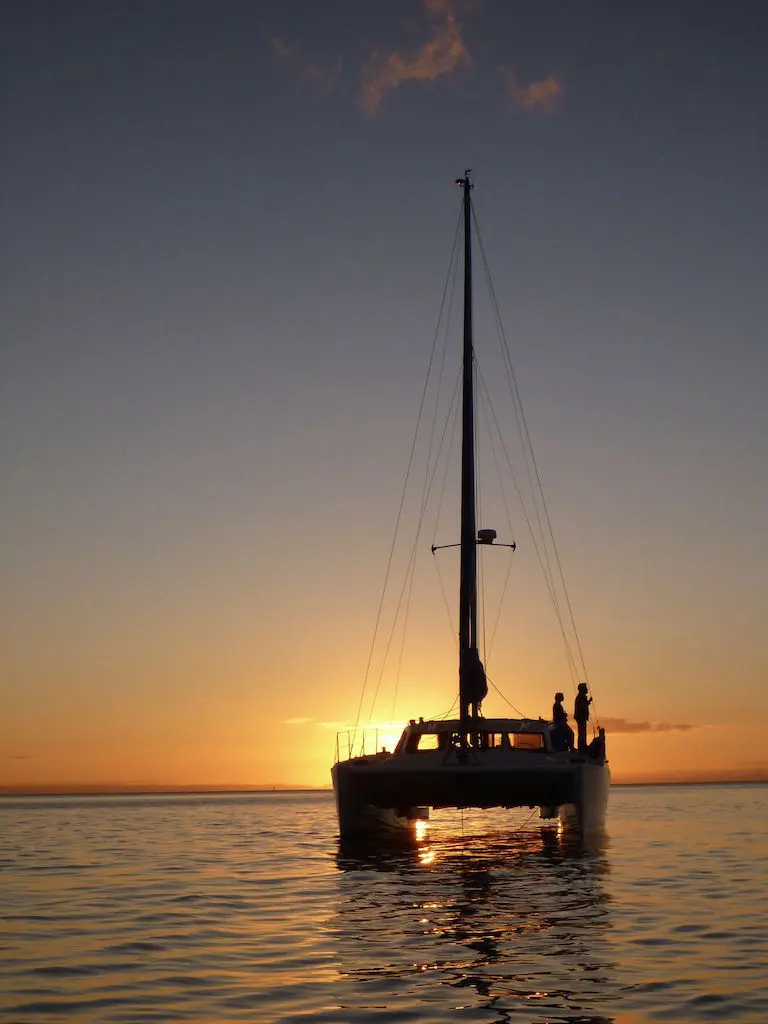
snapshots of building a sailboat
Building a sailing catamaran.
A collection of sailing catamaran building logs, from choosing sailboat plans to yacht launch...join us on our journey
This 'glass-over-ply' sailboat is proof that a DIY'er can successfully build an ocean-going multihull cost effectivly.
Having reliable Boatbuilding Resource Books , WILL HELP fast track your decisions prior to, during and post building.
We also wanted a light sailing catamaran that we could beach with ease. This now allows us to save money on one of the biggest maintenance DIY chores, sailboat antifouling without having the costly expense of slipway fees.
Where do I start?
Plywood and Epoxy Catamaran Why both?
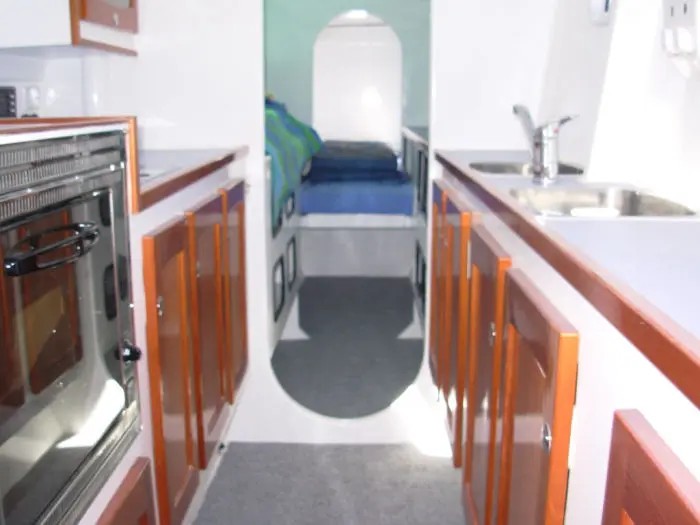
Plywood construction is the cheapest building method available and very forgiving while one hones their skills.
Finishing with a solid fiberglass outer is also a task made easier, given the amount of glassing and gluing needed during such a project. Doesn't make sense? Read more...
Talk to the sailboat designers , get to know their design types. Get on Forums and ask the 'dumb' questions. Go to marinas (not boat shows) and look for home-build yachts.
how to build a boat
"It takes a strong desire and a will to achieve. Building a large catamaran is certainly achievable". "If you want a yacht with all 'bells and whistles', keep working because it costs money...a lot of money". J Coomer
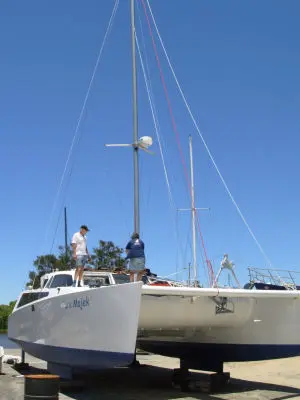
many sailboat plans to choose from!
Is it cheaper to build or buy? There are many yacht plans to choose from, but dont kid yourself. Many have tried to do it on the cheap and their result shows. If there was a cheaper way, the sailboat designers would tell you. Afterall, they would use that reason to sell there plans!
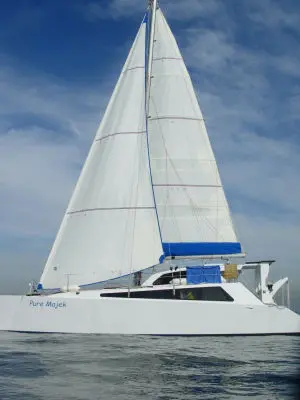
catamaran sailing
DIY boat projects on Pure Majek from new navigation equipment, anchoring systems, rewiring yacht electronics diagrams, AIS and much more. Its been ten great years since launch and we look at things that have worked and those we would change. Join us and be inspired.
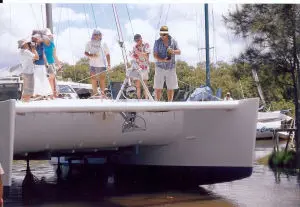
goal setting, planning and building
Setting achievable goals and how to stick to them. From the planning process, what and why we did many things, importantly, things we would do differently. The following pages draw on these experiences described in far more detail in our book ' A Sailing Catamaran Building Adventure '

‘Green power’ is climbing up the priority ladder to such an extent nowadays that some predictions of fossil fuel costs (scorned at a few years ago), are coming home to roost.
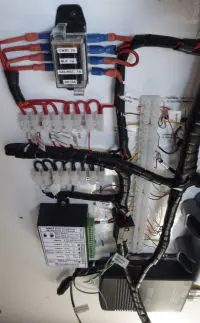
two-pack painting
There are a few tricks here to with respiration, thinning of the topcoat, temperature and coat thickness. All achievable by setting goals and being disciplined .
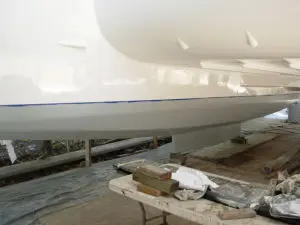
Building catamaran Pure Majek videos
Just want videos? Click our Youtube Channel . Over 500,000 views and counting. NO TALK videos . Thank you for your support.
Catamaran Hulls
Click photo
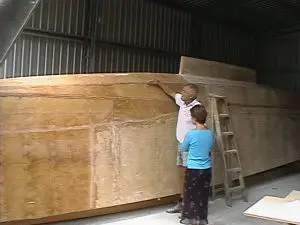
Catamaran Fitout
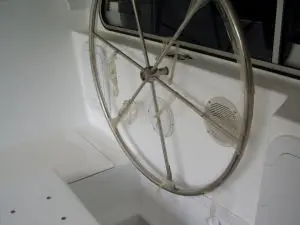
Catamaran Internal Painting
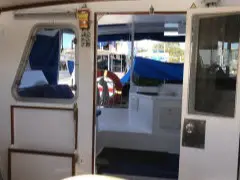
Bridgedeck & Turret
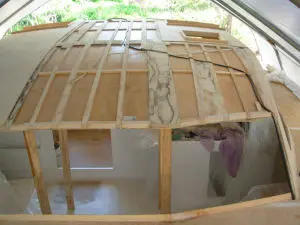
External Painting
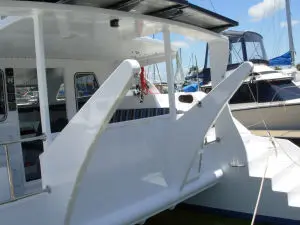
Final Fitout
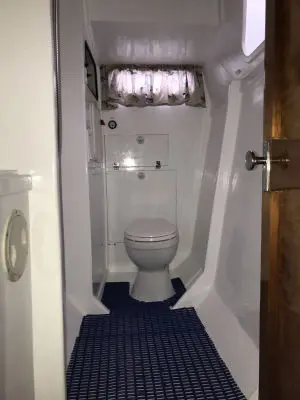
Antifoul & Decktred
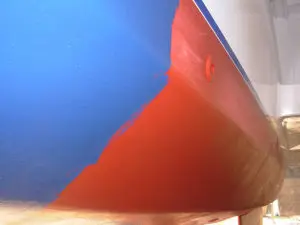
Fitout, ready for launch
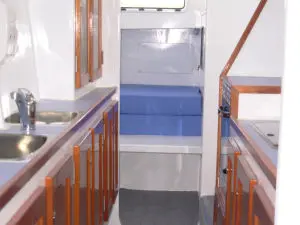
building: puremajek.com
sailing: diycatamaran.com
© Copyright 2009-2024 www.diycatamaran.com - All Rights Reserved
No video? EMPTY CACHE from your device, then UNMUTE .
No video? EMPTY CACHE from your device, then UNMUTE .
Starting out
Internal Painting
Bridgedeck and Turret
No video? EMPTY CACHE from your device, then UNMUTE .
- Featured Cats:
- Woodbridge 50′ Charter Cat
- Bloomfield 86′ MotorSailer Cat
- Shuttleworth 52 AeroRig
Pedigree Cats
Pedigree Cats specialize in building 100% custom , luxurious multihulls; power catamarans, sail catamarans and trimarans, with many amenities included as standard features. Pedigree Cats is the custom builder in the United States, using a USA-skilled labor force with proven composite building materials. We offer a variety of different catamaran models ranging from 60′ to 150′ and top designers for our customers to work with in designing their ultimate catamaran. We have been building custom composite multihulls since 1975.
Catamarans are created by the clients, working with designers and concept artist to get exactly what YOU want!
Our custom yachts are constructed under ABYC standards with EC compliant components and hardware. The catamaran hulls are constructed using Airex foam core, E-glass, Kevlar, carbon fiber, vinylester or epoxy resins. Pedigree Cats Catamarans are custom builders of your catamaran and, with factory direct sales, you can expect great savings.
Next to Launch: Available for Completion!
Frequently asked questions.
If you don’t find the answer you’re looking for, contact us!
[email protected] (360) 942-2810
CAT OR TRI?
Taken from The Design File, Tony Grainger Yacht Design.
“CATS have become more popular for cruising mainly because of the accommodation space and privacy they provide and because for a given length they are faster and cheaper to build than a trimaran. TRIS, on the other hand, provide good performance through a wider range of conditions than catamarans, and can also be effective for cruising by utilizing flare above the waterline in the main hull, and by fitting aft cabins where additional privacy is required in the accommodation layout. Apart from the accommodation, the trimaran provides a more forgiving motion in a sea way and better resistance to pitching if the hull shapes are well designed, and the wide beam allows it to carry more sail in fresh conditions. Against these advantages is the fact that a cat will require less berthing space and is likely to be more maneuverable in close quarters if twin diesels are fitted. Also, the cat will have a more steady motion than a tri while sailing downwind.”
I built my first multihull in the 70’s and it was a Trimaran, foam cored, TriStar design, a great multihull. Now I am building a cat for my wife and I, mainly because of the room, very wide main salon and stateroom and big aft deck and flybridge. The Tri was maybe a bit more sea kindly than the cat will be, but besides not having to build a third hull, she will be a bit faster as well as maybe a bit more economical.
Can I have what I want ?
But you must stay in the boundaries of the designer structural requirements i.e.. mast placement, weight to be carried and where. All the multihulls we have built over the last 42 years, have been what the clients have wanted, inside and out. Once they find the size they think will work, we find the basic design and designer for their dream platform to create it.
The final look is up to you, either with your drawing or pictures or work with one of several concept artists we know to help. Same with the interior, your interior designer, pictures or cut out from magazine of things you would like or we can line you up with someone to help. You work directly with these people, pay them directly to go as far as you want or need to, the do not work for Pedigree.
How long does it take to build your dream?
Based on our first price estimate, a basic 60′ power or sail typically takes about 24 months. This would be a very nice Cat, but not a lot of fancy, expensive items on board (gold faucets etc.) Engines, hydraulic steering, electric heads, windlass, gen.set, etc., very nice, but not a lot of goodies. The second price we show is with almost everything clients really want onboard, Watermaker, A/C, Shore boat, TV (s), fancy wood decor and custom items and electronics. This, of course, also adds more time to construct, maybe 6 months, You can also have us build to a certain stage and you take her home and finish the build or stretch out the time to build to fit your schedule or investments. If you add 6 months to each of these times, it would be for a 75′-85′ and 6 months to that and you would be in the 100′ range.
Taking her home from here or maybe cruise the San Juan islands, inside passage to Alaska first. Clients have also taken them to Vancouver and had them shipped to Florida or hire a crew to deliver them to where they want.
Why does Pedigree Catamarans, Inc. post our prices online?
We have been building multihulls since 1975 and we know how many hours each boat should take to build, even custom boats since we do not build production boats. Other companies may not have built or built enough boats to determine the cost. Granted boat costs vary directly with the customer’s requirements, however the hull build should not vary much.
Also, we do not have “salesmen.” We are a owner/operated business that talks directly with each customer based on our 42 years of boating and cruising experience. We believe that you want a cat of your own, not what a production builder thinks everyone should have.
I would be very leery of a company who wants large deposits up front and can’t provide basic prices to a customer. What we are hearing now from people that have paid a large deposit up front, only find the builder wants more and more and exceeded their guess of the cost and time line. Then the worst, they want more money or they will sell the cat to someone else, holding it for ransom from the highest bidder, Our clients chose to pay as we build and the cat is 100% theirs from the start and definitely no large deposit up front.
How much does a custom catamaran cost?
The cost of a custom Pedigree catamaran, constructed with foam core, composite construction is very close to that of a production built yacht. The advantage is, you will have exactly what you want and the disadvantage is, it will take a little while to build.
Charter cats are generally a lot less expensive. They do not need the big ticket luxury items, such as water makers, A/C, big gen. sets, fancy interiors, etc.
When we have an opening to start a new project, you can have just the hulls built and finish the catamaran yourself at a considerable savings at your home port. If you wish, we can provide you with a cat at what ever stage you like. For example, we can fit the engines and aide in completion and when you are ready to launch, we can arrange that as well.
Most of our catamarans are fully loaded and ready for cruising. We have listed the average cost clients have spent on our amenities and pricing page. For a list of some of amenities included in a Pedigree Cat and the average prices, click on the “Amenities & Pricing” button available from most pages on our site.
Over the last 20 years, the clients have chosen to pay as we build and they have approved to have done as well as what we purchase for them, engines etc..
All and all, we can provide just about anything you and your budget can imagine. Our goal is to get you out there to enjoy the fun with the exact Catamaran you have always wanted.
I think we are about the only builder that shows you the price you might spend on you dream, it’s up to you and what you want and need.
Why do Production Cats depreciate so much more than a quality custom built cat?
Several reasons. One might be, that every cat produced is probably from the same mold and in most cases, several years old and not updated or no improvements incorporated over any previously produced. Thus no real reason to get a new one if you can get the same one used for a lot less. The owners must lower their asking price far enough below the new ones that it will make it desirable. The price on the same new cat, next year, must be in line pricewise, in the marketing field to be sold, thus last years model must be substantially lower.
The production cats do not provide the clients with what they expected in a catamaran. Lacking in performance, require a lot of power to move them at a reasonably expected speed, to narrow to give the stability and the room onboard they were led to believe they would have. Deeper draft than expected, very heavy solid fiberglass construction, noisy, sinkable, sweat and hard to maintain a comfortable temperature inside. Most are imported and can not be used for charter in US waters.
One of our custom built multihulls came up for sale, built in 1980 and sold for $60,000 more than it cost the owners to have it built back then.
Even today, we have people trying to buy the clients cat we are constructing from the client and at a substantial amount more than they have into their dream. Problem is, this is their dream and it is not up for sale.
O.K. - I am interested in a Catamaran. What do I do next?
Step 1 – What type and length do I need?
Step 2 – What is included and how much is it going to cost?
Step 3 – Contact Us
Read the details >>>
Let us build your custom dream yacht!
Gary habersetzer started building multihulls in 1975 in washington..
In the late 70’s, the first Airex foam core Trimaran in the USA, a TriStar 42′ “Amenity” was built by Gary. The designer, Ed Horstman was as excited as he was to build a composite Multihull and ended up writing an instruction manual based on Airex information in conjunction with ABS standards. At that time, there was no one in the USA that was building composite Multihulls.
Bloomfield 86’ Custom Catamaran
This is a great place to start if you ever wanted a custom catamaran…saving over 2 years of construction time.
Now, about the custom catamaran…..This cat is 86′ long and 42′ wide and with keels and can be beached or set on a spit at low tide to do clean up or repaint bottoms. She is a custom composite catamaran built with Airex foam core, tri- and bi-axial fabric and Vinylester resin, carbon fiber and epoxy resin, Kevlar where needed for beaching.
Log in or Sign up
You are using an out of date browser. It may not display this or other websites correctly. You should upgrade or use an alternative browser .
home built small catamaran
Discussion in ' Boat Design ' started by Donald1234 , Dec 6, 2017 .
Donald1234 Junior Member
I am new to building boats but have always wanted to build my own sailboat. I want to make it out of wood then fiberglass over it I do not know much about building boat and there design any and all ideas will be helpful I am looking basing the design off of the Hobie cat 16 but I want this boat to be the best it can be. I plan to use what I think is called the stitch and glue method to make the hulls I found some plans on making a wooden mast but if I can find one cheap id rather buy it. I want to use the cedar stripping method for the tops of the pontoons or at least part of them and have a trident design on it thank you for any help you may be able to give
kerosene Senior Member
-Buy specific plans that fit your needs the best. -Follow them. This way you will waste the least amount of time and spend the least amount of money. 2 questions related to your choice: -What is your sailing experience? -are you aware that even efficient home building cannot save you any money compared to a good used boat?
Oh yeah, I cannot help you with plan choices but from your build methods you should probably read this book: The Gougeon Brothers on Boat Construction: Wood and WEST System Materials
fallguy Senior Member
Try checking out this one. Sailing Catamarans - Quattro 16ft twin trapeze beach catamaran http://sailingcatamarans.com/index.php/designs-2/46-beach-cats-and-dinghies/7-quattro-16
I am building a Woods Skoota 32DM. After checking out the Quattro; email Richard and see if the quattro is the best fit.
kerosene said: ↑ -Buy specific plans that fit your needs the best. -Follow them. This way you will waste the least amount of time and spend the least amount of money. 2 questions related to your choice: -What is your sailing experience? -are you aware that even efficient home building cannot save you any money compared to a good used boat? Click to expand...
kerosene said: ↑ Oh yeah, I cannot help you with plan choices but from your build methods you should probably read this book: The Gougeon Brothers on Boat Construction: Wood and WEST System Materials Click to expand...
Zilver Junior Member
FYI Another option for a small wooden a-symetric (like the hobie 16) catamaran could be the Duo 425 or sc 435 from Bernd Kohler. 425to550 http://ikarus342000.com/425to550.htm Cheers, Hans
upchurchmr Senior Member
"Best" when applied invites a lot of opinion. My 2cents. Don't try to build Hobie 16 shaped hulls. Hulls that use a centerboard or daggerboard perform better. They go into the wind faster and at a closer angle to the wind. Then when you are off wind, they can be retracted and that is faster on that point of sail. Personally I don't like boats with no boards, but with deep sharp keel lines. They can actually work pretty well but overall are just a bit slower. If you build a one off boat for your area you will not really care about the very last bit of performance, cause you probably will not be racing anyone. So my opinion might not matter too much to you. There are plans available for an A-class catamaran. Here is and article on building. This is a "tortured ply" design (described in the Gougeon's book) of 18' intended for one person with only a main sail. It might be too racing oriented for you. Build your own A Class catamaran! :: Catamaran Sailboats at TheBeachcats.com https://www.thebeachcats.com/news/49/build-your-own-a-class-catamaran?Article49.html
upchurchmr said: ↑ "Best" when applied invites a lot of opinion. My 2cents. Don't try to build Hobie 16 shaped hulls. Hulls that use a centerboard or daggerboard perform better. They go into the wind faster and at a closer angle to the wind. Then when you are off wind, they can be retracted and that is faster on that point of sail. Personally I don't like boats with no boards, but with deep sharp keel lines. They can actually work pretty well but overall are just a bit slower. If you build a one off boat for your area you will not really care about the very last bit of performance, cause you probably will not be racing anyone. So my opinion might not matter too much to you. There are plans available for an A-class catamaran. Here is and article on building. This is a "tortured ply" design (described in the Gougeon's book) of 18' intended for one person with only a main sail. It might be too racing oriented for you. Build your own A Class catamaran! :: Catamaran Sailboats at TheBeachcats.com https://www.thebeachcats.com/news/49/build-your-own-a-class-catamaran?Article49.html Click to expand...
Donald, If you don't know about daggerboards you probably ought to buy a catamaran and sail for a while before designing something. To not know about something so basic indicates you need some more knowledge.
upchurchmr said: ↑ Donald, If you don't know about daggerboards you probably ought to buy a catamaran and sail for a while before designing something. To not know about something so basic indicates you need some more knowledge. Click to expand...
fallguy said: ↑ Wood's Quattro has a skeg to address your point, but Richard might take issue with the word slower. He has other catamarans op might find interesting, but I think this is the 'best' RW s&g method in this size. OP-send him an email and ask. Richard really loves sailing the small cats, if I may speak for him. He'd be good to talk with even should you use a different plan. All this sailing business is way outta my league, I was just trying to make sure the OP knew about Wood's Designs; nothing more. I am unqualified to say 'best'. Another thing you ought to consider is a sor or mission statement first; to try and get the 'best' fit. Click to expand...
- Advertisement:
Richard Woods is a world known designer of sailing cats. He likes the sail the beach cats and goes to the Bahamas each year to teach and race small cats n beachers. I don't think designing your own boat is wise when you can get plans from him for a bit over a hundred bucks. His email is woodsdesigns @ gmail dot moc. Moc is backwards. Purposely modified a bit to save him spambots. No spaces and the dot is a dot. I can't seem to converse with you privately. But write a mission statement; you'll be glad you did. It will help you get the right boat for you. i.e. Single or double trapeze Racing class, if desired Weight/trailerability Sail setup Etc.
Homebuilt small Foiler well executed
Do homebuilt kayaks & canoes need hull identification numbers in the U.S.?
What countries can a home built 50' steel boat be titled as easy as USA?
Homebuilt boat for Baltic Sea?
Homebuilt Personal Watercraft
Home designed/built dinghy
Home Built Boats
Can anybody ID this 17' Homebuilt Day Sailer?
homemade rowing coaches launch
Pocket Carrack home build…little help please
- No, create an account now.
- Yes, my password is:
- Forgot your password?


IMAGES
VIDEO
COMMENTS
If you were to build a 40-foot (12.1-meter) catamaran, your cost of materials would range between 20-30% of the total cost. Therefore, for $300,000 total, the boat's materials would range between $60,000 and $90,000. The hull tends to range between 15-35% of the total build.
Batteries, buy a catamaran, Carbon Fibre Cloth, catamaran build Kit Materials, catamaran design, catamaran home build, catamaran kit materials, catamarandesign, CE CERTIFICATION, compare schionning catamaran designs, compare schionning designs catamarans, Construction techniques do differ between designs, data sheets have been supplied by ATL ...
Wharram Self-build boat plans start from only £120. Wharram designs are based on years of practical, hands-on experience of building and ocean sailing catamarans. They are renowned for their seaworthiness, stability and safe simplicity. Designs from 14' - 63' are available for self-building in ply/epoxy with very detailed, easy to follow ...
However with all things considered, building a multi can be an amazing journey. Fast Twin Catermaran. $ 30.00 - $ 45.00 (USD) Lively 28 Cruising Trimaran. $ 170.00 - $ 185.00 (USD) Lively 35 Cruising Trimaran. $ 355.00 - $ 370.00 (USD) Catamaran & Trimaran Boat Plans from Hartley Boats make it a reality to build your own multihull at home.
My husband and I spent 2 years building our dream boat. We started with plans that we had to change quite a bit to make it how we wanted it. The Darla Jea...
The Best Advanced Build System in the World. The Schionning Advanced Build System are one of the simplest ways to build your own boat, or have a custom design built faster and more accurately by a professional. Utilising DuFlex panels with a balsa core, large sheets are joined on their long edge to form full length hull panels, bulkheads etc ...
The next step is to build the catamaran frame, which involves cutting and fitting the wood pieces together to form the hulls and decks. Finally, you will need to attach the decking, add the rig and sails, and finish the project with paint and varnish. Benefits of Building a Catamaran. Building a catamaran can be a very rewarding experience.
Kurt Hughes Design boats for sale. KHSD boat Videos. Tel: 206.719.4893 Email: Kurt Hughes [email protected] Slater's Landing
Step 1. Kit Design. Work with us to finalise the details of the design you have chosen including any design options or additional modules to be included in the kit. We will determine the laminates, the number of panels required for each laminate, create the cutting files and prepare a quote for the kit if it is not already priced.
Axiom #1: The hours to build a catamaran is. in almost in direct proportion to its weight. Which brings us to Axiom #2: Axiom #2: It takes about 1 hour to create. 1 pound of finished boat. In our case we spent 3,500 hours ( click. here for full details on the construction hours) to build a 4,000 lb. boat.
A 3-year DIY homebuilder project — building a 40ft catamaran. If you have dreamed of making a boat and sailing off over the horizon — do it. The book "Build...
Everything you need to build your own sea-going catamaran: 3 steps. Familiarise yourself with our range of designs and their unique qualities. For more detailed information read the Wharram Design Book which reviews each self-build boat model and offers a detailed introduction and understanding of the world of self-build catamarans.; Order one or more sets of our Study Plans and immerse ...
Fast forward through 3 year's work - in 3 minutes, the building of a 40ft catamaran.An overview — building a DIY homemade 40ft catamaran. If you have dreamed...
Ed Horstman designed TRIMARAN and CATAMARAN plans are drawn for the first time builder. Plans are concise and clearly drawn so the builder can easily follow each building step. ... All boats may be built with flared hulls, with the exception of the TRI 25, TRI 26MT, CAT 27PC and the CAT 27. A DESIGN FEE for customer modifications to stock plans ...
Plywood and Epoxy Catamaran. This 'glass-over-ply' sailboat is proof that a DIY'er can successfully build an ocean-going multihull. Plywood construction is the cheapest building method available and very forgiving while one hones their skills. Finishing with a solid fiberglass outer is also a task made easier, given the amount of glassing and ...
Our custom yachts are constructed under ABYC standards with EC compliant components and hardware. The catamaran hulls are constructed using Airex foam core, E-glass, Kevlar, carbon fiber, vinylester or epoxy resins. Pedigree Cats Catamarans are custom builders of your catamaran and, with factory direct sales, you can expect great savings.
A new edition of The Coastal Passage has just been posted. Click on the image at right to download the PDF. Covid Cruising! From Tasmania to Greece with a boat built by the editor. For more information on this boat, see and check out The BareBones project. The $21,000, 30 foot+ Catamaran! "PLANS" NOW FREE!
James Wharram's First Catamaran Build. Jul 2, 2021. Ruth aboard Tangaroa shortly after the boat's initial launch. More than just a sailor and designer, James Wharram, originally of Manchester, England, is also both a free-thinker and an individual clearly dedicated to getting as much out of this life as possible.
Building a 14ft plywood motor catamaran - An introduction to the project and showcase of the homemade boat. -----...
The Beginner's Guide to Sailing Catamarans. When it comes to sailing, having access to the most innovative, top quality yachts does make a difference. This is how a vacation on the water goes from ordinary to extraordinary. The Moorings catamarans are exclusively designed by renowned boat builders Robertson & Caine, a South African company ...
home built small catamaran. Discussion in 'Boat Design' started by Donald1234, Dec 6, 2017. Page 1 of 2 1 2 Next > Joined: Dec 2017 Posts: 6 Likes: 0, Points: 1 Location: mississippi Donald1234 Junior Member. I am new to building boats but have always wanted to build my own sailboat. I want to make it out of wood then fiberglass over it I do ...
Homemade backyard catamaran Kaleidoscope, built by one man. This video represents me designing my home made backyard boat build. Custom 100ft catamaran, from...
Govt Registration for a Home Built Catamaran: ejlindahl: Boat Ownership & Making a Living: 3: 11-03-2012 21:55: Insurance for a Home Built Catamaran: ejlindahl: Boat Ownership & Making a Living: 1: 10-03-2012 20:35